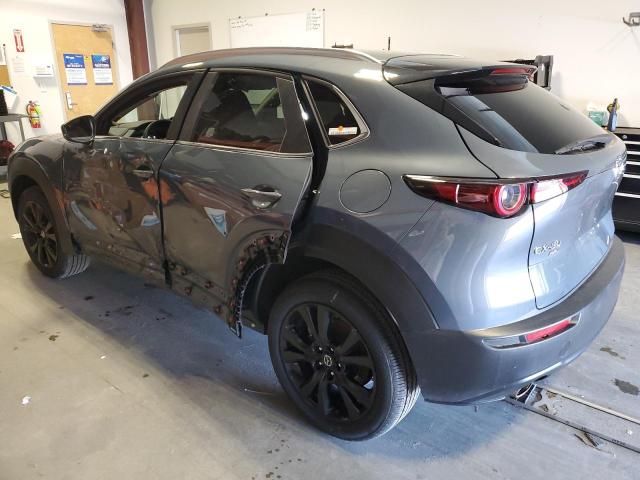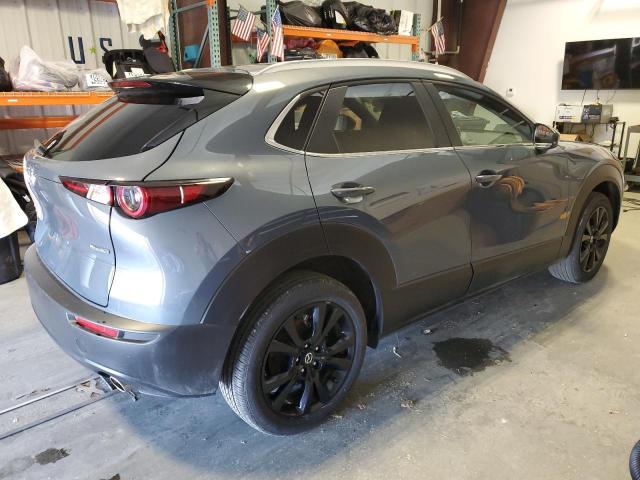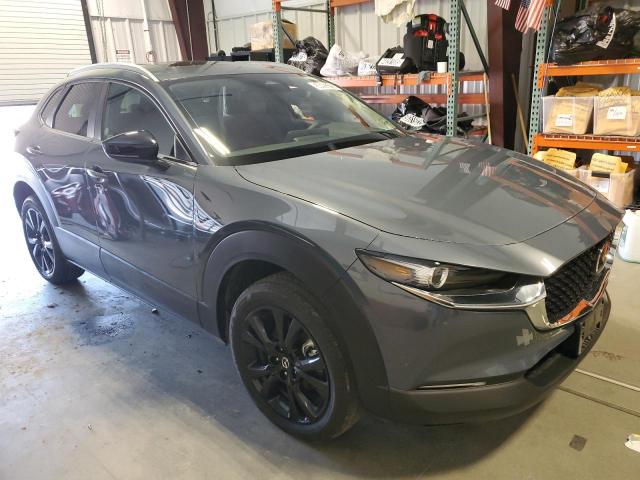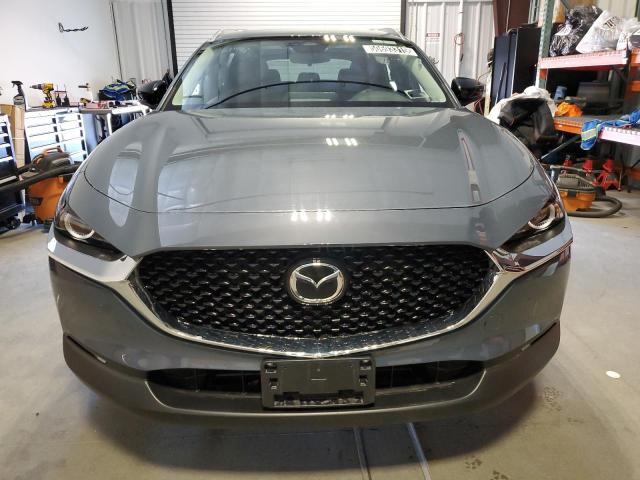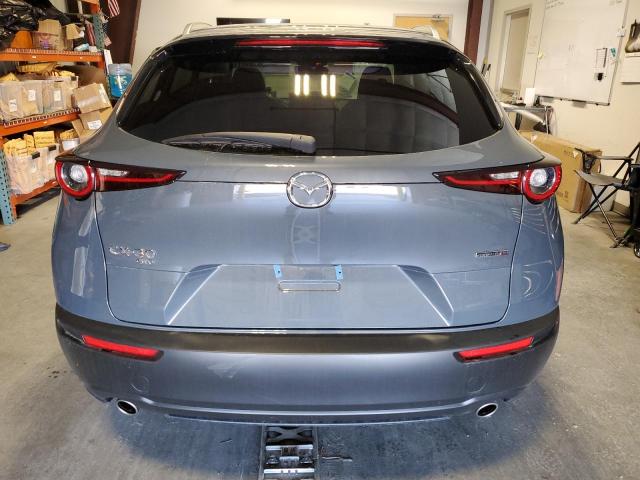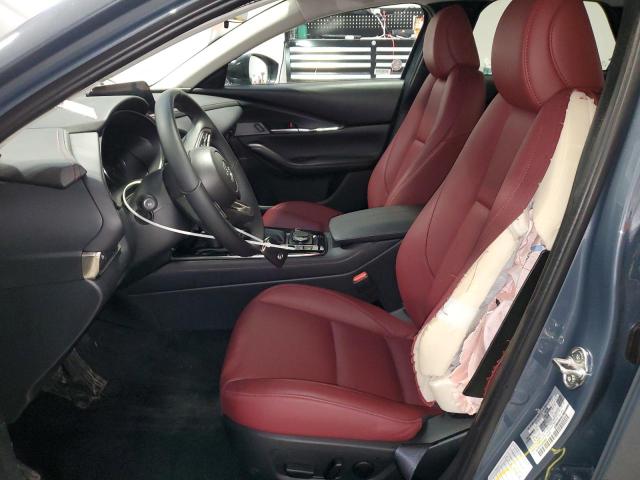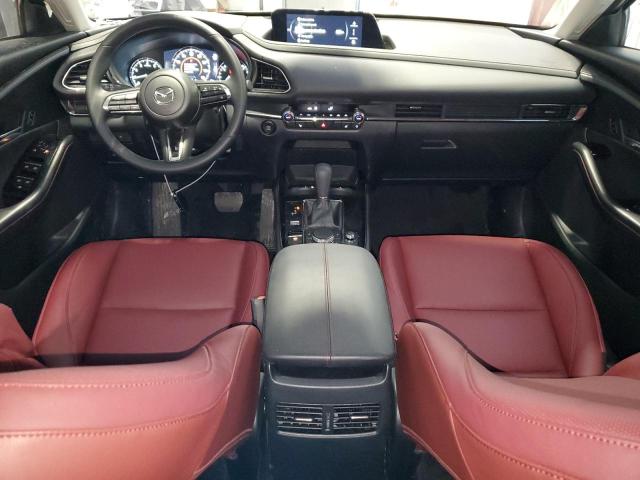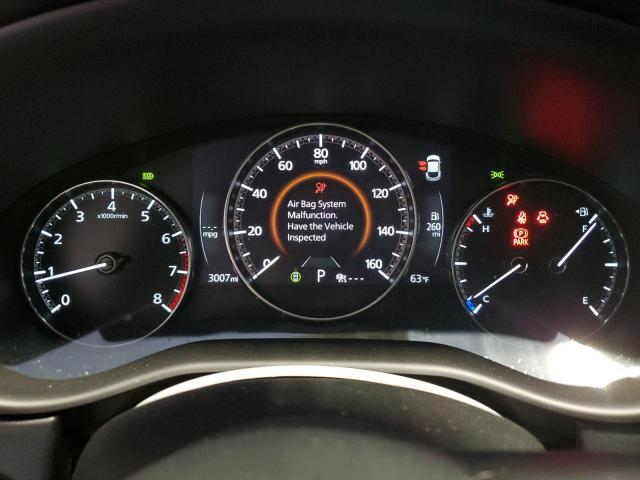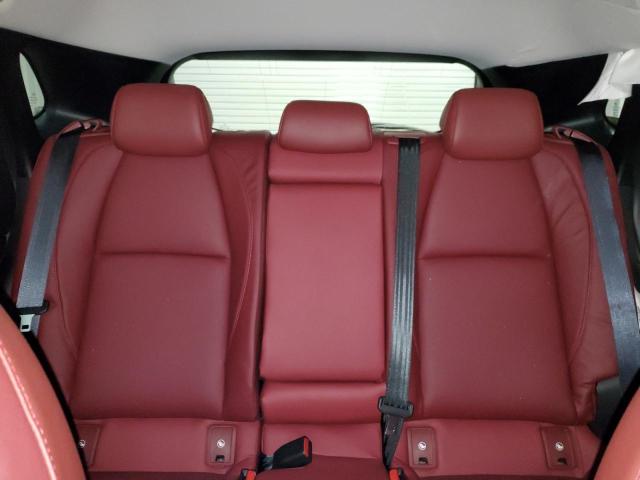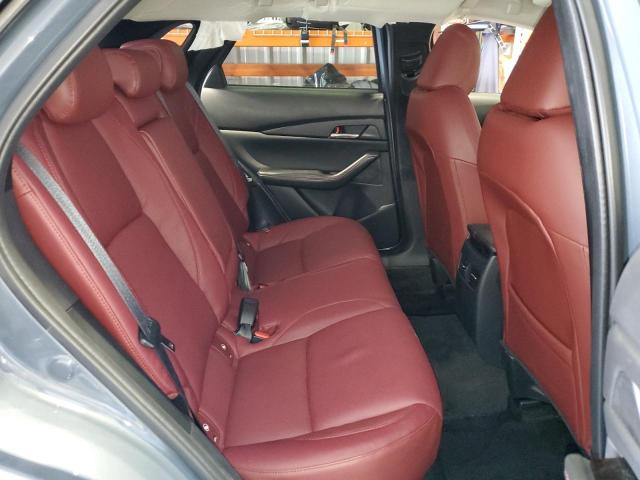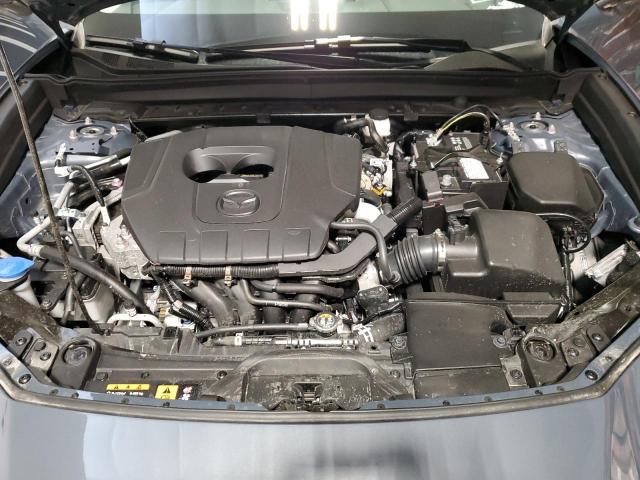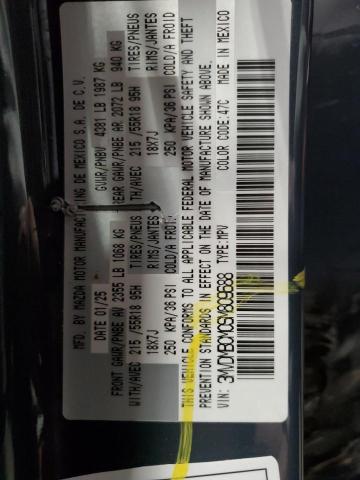2025 MAZDA CX-30 | 3MVDMBCM0SM809688
 ❯
❯
Specifications
2
~$37,000
Engine: 2.5L turbocharged I4
Torque: 434 Nm
0–100 km/h: ~5.9 s
The Mazda CX-30 Turbo proves that performance can come in a compact, stylish package. With 250 hp and 434 Nm of torque (on 93-octane fuel), the 2.5L turbocharged engine launches this subcompact crossover from 0–100 km/h in just 5.9 seconds — significantly quicker than most rivals in its class. The 6-speed automatic transmission favors responsiveness and smoothness, and Mazda's i-ACTIV all-wheel drive system ensures excellent grip in all weather conditions.
Despite being a crossover, the CX-30 delivers distinctly car-like handling, thanks to Mazda’s G-Vectoring Control Plus and well-tuned suspension. Body roll is minimal, steering is precise, and the chassis feels planted even in fast corners. The result is a crossover that drives more like a hot hatch than a small SUV. Whether weaving through traffic or attacking twisty back roads, the CX-30 Turbo delivers confident performance with a composed, agile demeanor.
It’s one of the few crossovers that blends premium refinement, quick acceleration, and athletic handling in a package that’s equally practical and fun to drive.
Body Styles
The Mazda CX-30 is a subcompact crossover SUV that slots between the Mazda CX-3 and CX-5 in size and character. With a coupe-like roofline, black cladding around the wheel arches, and Mazda’s Kodo design language, it emphasizes elegance over ruggedness. Its sleek proportions, long hood, short rear overhang, and wide stance give it a dynamic, upmarket appearance uncommon in its segment. A wheelbase of 2655 mm allows for generous interior space relative to exterior dimensions, while a high beltline and tapered rear window complete its coupe-crossover identity.
Model Name Meaning (Manufacturer)
The “CX” in CX-30 denotes its place in Mazda’s crossover lineup, while “30” signals its size between the smaller CX-3 and larger CX-5. It was given the "30" designation — rather than "4" — to avoid confusion with the Mazda3 hatchback, despite sharing its platform. The name reflects its unique role as a bridge between hatchback agility and SUV practicality.
Body & Interior Colors and Rims
The CX-30 is available in refined, emotionally resonant colors like Soul Red Crystal, Polymetal Gray, Machine Gray, Deep Crystal Blue, Jet Black, Snowflake White Pearl, and Zircon Sand. Mazda’s premium paintwork uses multi-layer reflective finishes that shift under different lighting. Turbo trims include black mirror caps and badges, giving the CX-30 a more aggressive stance.
Inside, the CX-30 punches above its weight in material quality. Soft-touch surfaces, real stitching, and sculpted panels give the cabin a premium, minimalist aesthetic, often compared to luxury European brands. Interior color themes include Black, White, and Garnet Red (on select trims), with contrasting leather or leatherette upholstery. The driver-focused cockpit features a 7-inch digital display, an 8.8-inch center infotainment screen (controlled via rotary dial), and available Bose 12-speaker audio. Fit and finish are class-leading, with clean lines and subtle ambient lighting.
Wheel designs range from 16-inch silver alloys on base trims to 18-inch gloss black or machined aluminum wheels on Preferred, Premium, and Turbo models. The wheel arches and side sills are clad in thick black plastic for visual protection, lending the CX-30 an adventurous edge despite its urban focus.
Top Expensive Options
- Turbo Premium Plus Package with Leather Seats and Smart Brake Rear: $2,000
- Bose 12-Speaker Audio with CenterPoint Technology: $800
- Adaptive Front Lighting with LED Projectors: $600
- Windshield-Projected Head-Up Display (HUD): $900
- Heated Steering Wheel and Front Seats: $500
- 360° View Monitor with Front & Rear Sensors: $750
- Power Rear Liftgate with Height Memory: $400
- Traffic Jam Assist with Lane Centering: $650
- Navigation with Real-Time Traffic Integration: $450
- Wireless Phone Charging and USB-C Ports: $350
vs Competitors
The Mazda CX-30 competes with the Subaru Crosstrek, Honda HR-V, Toyota Corolla Cross, Kia Seltos, and VW Taos — but sets itself apart with premium craftsmanship, sharper handling, and a high-output turbo option. The Crosstrek offers standard AWD and trail ability, but lacks the CX-30’s interior sophistication and speed. The HR-V is roomy but underpowered, and the Corolla Cross trades refinement for value. The CX-30 also feels more refined and engaging to drive than the Seltos or Taos. For buyers who want a luxury-lite experience, elegant styling, and class-leading dynamics in a compact form, the CX-30 is a standout.
Fun Fact
The Mazda CX-30 shares its platform and cabin design with the Mazda3, giving it a lower center of gravity and more responsive handling than typical crossovers. It also features Mazda’s Skyactiv Vehicle Architecture, which is engineered to reduce driver fatigue by subtly guiding natural body posture — a concept inspired by Japanese horse riding philosophy (jinba ittai — “horse and rider as one”).
Lot Details
-
Sale Date23/May/2025
-
Lot Number50693315
-
Sale document
-
Location
-
Odometer3,007 miles (4,839 km)
-
Primary Damage:SIDE
-
Secondary DamageMECHANICAL
-
Seller
-
Fuel
-
Engine Type2.5L 4
-
Transmission
-
Drive Type
-
Color
Final Bid Mazda CX-30 (2025)
$12,000
$13,763
$14,750
Specifications
2
~$37,000
Torque:
0–100 km/h:
The Mazda CX-30 Turbo proves that performance can come in a compact, stylish package. With 250 hp and 434 Nm of torque (on 93-octane fuel), the 2.5L turbocharged engine launches this subcompact crossover from 0–100 km/h in just 5.9 seconds — significantly quicker than most rivals in its class. The 6-speed automatic transmission favors responsiveness and smoothness, and Mazda's i-ACTIV all-wheel drive system ensures excellent grip in all weather conditions.
Despite being a crossover, the CX-30 delivers distinctly car-like handling, thanks to Mazda’s G-Vectoring Control Plus and well-tuned suspension. Body roll is minimal, steering is precise, and the chassis feels planted even in fast corners. The result is a crossover that drives more like a hot hatch than a small SUV. Whether weaving through traffic or attacking twisty back roads, the CX-30 Turbo delivers confident performance with a composed, agile demeanor.
It’s one of the few crossovers that blends premium refinement, quick acceleration, and athletic handling in a package that’s equally practical and fun to drive.
Body Styles
The Mazda CX-30 is a subcompact crossover SUV that slots between the Mazda CX-3 and CX-5 in size and character. With a coupe-like roofline, black cladding around the wheel arches, and Mazda’s Kodo design language, it emphasizes elegance over ruggedness. Its sleek proportions, long hood, short rear overhang, and wide stance give it a dynamic, upmarket appearance uncommon in its segment. A wheelbase of 2655 mm allows for generous interior space relative to exterior dimensions, while a high beltline and tapered rear window complete its coupe-crossover identity.
Model Name Meaning (Manufacturer)
The “CX” in CX-30 denotes its place in Mazda’s crossover lineup, while “30” signals its size between the smaller CX-3 and larger CX-5. It was given the "30" designation — rather than "4" — to avoid confusion with the Mazda3 hatchback, despite sharing its platform. The name reflects its unique role as a bridge between hatchback agility and SUV practicality.
Body & Interior Colors and Rims
The CX-30 is available in refined, emotionally resonant colors like Soul Red Crystal, Polymetal Gray, Machine Gray, Deep Crystal Blue, Jet Black, Snowflake White Pearl, and Zircon Sand. Mazda’s premium paintwork uses multi-layer reflective finishes that shift under different lighting. Turbo trims include black mirror caps and badges, giving the CX-30 a more aggressive stance.
Inside, the CX-30 punches above its weight in material quality. Soft-touch surfaces, real stitching, and sculpted panels give the cabin a premium, minimalist aesthetic, often compared to luxury European brands. Interior color themes include Black, White, and Garnet Red (on select trims), with contrasting leather or leatherette upholstery. The driver-focused cockpit features a 7-inch digital display, an 8.8-inch center infotainment screen (controlled via rotary dial), and available Bose 12-speaker audio. Fit and finish are class-leading, with clean lines and subtle ambient lighting.
Wheel designs range from 16-inch silver alloys on base trims to 18-inch gloss black or machined aluminum wheels on Preferred, Premium, and Turbo models. The wheel arches and side sills are clad in thick black plastic for visual protection, lending the CX-30 an adventurous edge despite its urban focus.
Top Expensive Options
- Turbo Premium Plus Package with Leather Seats and Smart Brake Rear: $2,000
- Bose 12-Speaker Audio with CenterPoint Technology: $800
- Adaptive Front Lighting with LED Projectors: $600
- Windshield-Projected Head-Up Display (HUD): $900
- Heated Steering Wheel and Front Seats: $500
- 360° View Monitor with Front & Rear Sensors: $750
- Power Rear Liftgate with Height Memory: $400
- Traffic Jam Assist with Lane Centering: $650
- Navigation with Real-Time Traffic Integration: $450
- Wireless Phone Charging and USB-C Ports: $350
vs Competitors
The Mazda CX-30 competes with the Subaru Crosstrek, Honda HR-V, Toyota Corolla Cross, Kia Seltos, and VW Taos — but sets itself apart with premium craftsmanship, sharper handling, and a high-output turbo option. The Crosstrek offers standard AWD and trail ability, but lacks the CX-30’s interior sophistication and speed. The HR-V is roomy but underpowered, and the Corolla Cross trades refinement for value. The CX-30 also feels more refined and engaging to drive than the Seltos or Taos. For buyers who want a luxury-lite experience, elegant styling, and class-leading dynamics in a compact form, the CX-30 is a standout.
Fun Fact
The Mazda CX-30 shares its platform and cabin design with the Mazda3, giving it a lower center of gravity and more responsive handling than typical crossovers. It also features Mazda’s Skyactiv Vehicle Architecture, which is engineered to reduce driver fatigue by subtly guiding natural body posture — a concept inspired by Japanese horse riding philosophy (jinba ittai — “horse and rider as one”).

